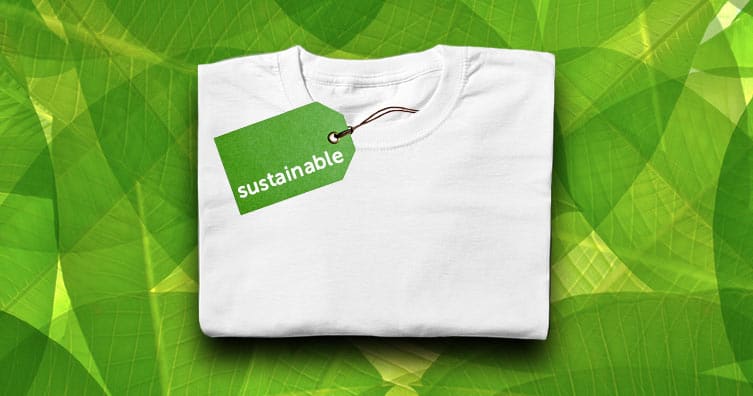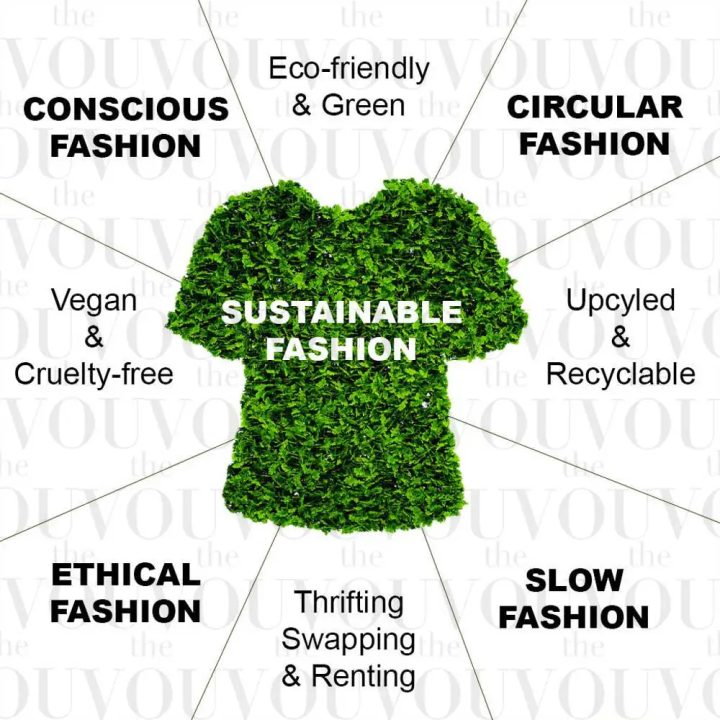Exploring the Surge of Cape Town Sustainable Fashion Brands
Exploring the Surge of Cape Town Sustainable Fashion Brands
Blog Article
Remain Ahead of the Curve by Discovering Innovative Style Fads
In a sector as dynamic as fashion, staying ahead entails even more than just complying with current patterns-- it demands an expedition of technology. Smart fabrics, for circumstances, are changing garments into functional masterpieces, while 3D printing is revolutionizing layout processes with its adjustable, waste-reducing abilities. As sustainability comes to be a cornerstone, developments like green products and circular style methods are reshaping ecological duty - Cape Town Sustainable Fashion. Moreover, the convergence of technology and fashion proclaims a new era of customer involvement. How, after that, can these emerging patterns redefine the future of fashion, and what ramifications do they hold for brands looking for to flourish in this evolving landscape?

Embracing Smart Textiles
Over the last few years, the style sector has actually observed a transformative change with the assimilation of clever fabrics, a cutting-edge advancement that blends technology with fabric. This evolution represents not only a blend of visual appeals and functionality yet likewise a considerable leap in the direction of sustainability and personalization in style. Smart fabrics, also referred to as e-textiles, embed sophisticated electronic devices such as sensing units and conductive strings within the textile, allowing garments to communicate with the user or the setting.
These fabrics are made to monitor physical specifications, such as heart rate or body temperature level, supplying real-time wellness analytics. Past wellness applications, smart textiles are likewise being made use of for flexible garments, which can change shade or pattern in feedback to environmental stimuli, thus supplying a vibrant style experience.
Additionally, the advancement of energy-harvesting fabrics that produce power from motion or sunlight is leading the method for self-dependent wearable modern technology. This advancement is attracting ecologically conscious consumers and designers intending to minimize the eco-friendly footprint of style. As study and advancement in this area advancement, wise fabrics are anticipated to come to be significantly prevalent, improving the landscape of modern-day fashion with their multifunctional capabilities.
The Increase of 3D Printing
Revolutionizing the manufacturing landscape, 3D printing has arised as a game-changer in the apparel industry. This cutting-edge technology has actually allowed designers to press the borders of creative thinking, generating elaborate and personalized garments that were formerly unimaginable. By leveraging digital design and additive production, 3D printing assists in the production of complicated geometries and patterns, permitting developers to experiment with new textures and frameworks.
A remarkable advantage of 3D printing in fashion is its capability to create on-demand, decreasing waste and decreasing supply needs. This effectiveness not only optimizes production processes but additionally enables fast prototyping, allowing designers to bring their visions to life in a shorter timeframe. In addition, 3D printing supports personalization to a level unequaled by traditional techniques, offering personalized fits and unique layouts tailored to private customer preferences.
The surge of 3D printing has actually additionally democratized fashion, making it available to arising developers who can now produce high-grade items without substantial economic investment in conventional manufacturing framework. As innovation remains to advance, the style sector is poised to harness the complete capacity of 3D printing, exploring new products and strategies that will most certainly redefine how style is developed and produced.
Lasting Fashion Advancements
As the fashion business comes to grips with the pressing demand for ecological duty, lasting fashion developments have arised at the center of transformative change. The expanding awareness of environmental influence has sustained a change towards more eco-conscious practices and materials. Developers and brands are now focusing on sustainability, incorporating approaches that lessen waste and minimize carbon footprints.
One substantial growth is the surge of round style, which highlights recycling and upcycling to prolong the lifecycle of garments. This method not only decreases waste however also motivates customers to adopt a more mindful technique to apparel discover here usage. In addition, the usage of lasting products, such as organic cotton, hemp, and recycled polyester, has gotten grip. These materials call for much less water and energy during manufacturing, significantly minimizing ecological effect.
An additional innovation depends on the adoption of cutting-edge dyeing techniques that utilize all-natural dyes or waterless processes, consequently reducing the huge quantities of water and chemicals generally used in fabric dyeing. Moreover, innovations in biotechnology have caused the production of lab-grown natural leather and textiles, providing cruelty-free and environmentally pleasant options to conventional products. With these introducing initiatives, the garment industry is making significant strides towards a more sustainable future.

Tech-Integrated Garments
Tech-integrated garments stands for a cutting-edge blend of fashion and modern technology, reshaping exactly how individuals engage with their clothing. This cutting-edge domain is noted by the inclusion of wise textiles and ingrained digital components, improving both performance and visual allure. From fitness trackers embedded in sportswear to warmed coats managed using smartphone apps, tech-integrated apparel uses customers unprecedented comfort and adaptability.
Pioneering brand names are driving this pattern, concentrating on creating garments that react to environmental stimuli or customer commands. For instance, some garments can transform shade or pattern in action to temperature shifts, while others incorporate biometric sensors to check wellness metrics like heart rate or tension levels. The smooth integration of innovation right into fabrics additionally includes environmental sustainability, with initiatives to establish self-cleaning fabrics or garments that adjust to weather, hence minimizing the need for multiple layers.
Moreover, the introduction of wearable technology is not simply limited to apparel but includes devices like watches and eyeglasses, further broadening the scope of tech-integrated style. As the market remains to innovate, the potential for personalization look at this site and personalization in apparel expands, using consumers distinct, tech-enhanced style experiences that deal with their specific needs and choices.
Future of Virtual Style
In the last few years, the future of virtual style has emerged as a transformative pressure within the sector, leveraging improvements in digital technology to redefine exactly how fashion is developed, experienced, and consumed. By incorporating augmented fact (AR), digital fact (VR), and 3D design devices, designers can currently craft immersive and interactive experiences that go beyond typical style boundaries. Online style enables the development of garments that exist only in electronic atmospheres, providing countless possibilities for development without the restrictions of physical production.
This electronic change not just provides possibilities for imaginative expression however likewise addresses sustainability problems integral in standard fashion techniques. Cape Town Sustainable Fashion. By removing the demand for physical resources, virtual style reduces waste and reduces carbon impacts. In addition, the surge of digital style straightens with the increasing consumer demand for unique and customized experiences, as digital garments can be customized and tailored to specific choices with convenience

Verdict
The fashion industry's future lies in the assimilation of sustainable methods and cutting-edge modern technologies. Digital style is poised to redefine consumer communications.
In recent years, the style sector has seen a transformative change with the assimilation of wise fabrics, a sophisticated advancement that blends modern technology with fabric.As the fashion industry grapples with the pressing need for environmental obligation, lasting fashion technologies have actually emerged at the leading edge of transformative modification.In recent years, the future of digital fashion has actually arised as a transformative force within the industry, leveraging developments in digital modern technology to redefine how fashion is created, experienced, and taken in. The surge of digital style straightens with the boosting consumer demand for personalized and distinct experiences, as digital garments can be tailored and tailored to individual preferences with ease.
The style sector's future lies in the combination of innovative technologies and lasting practices.
Report this page